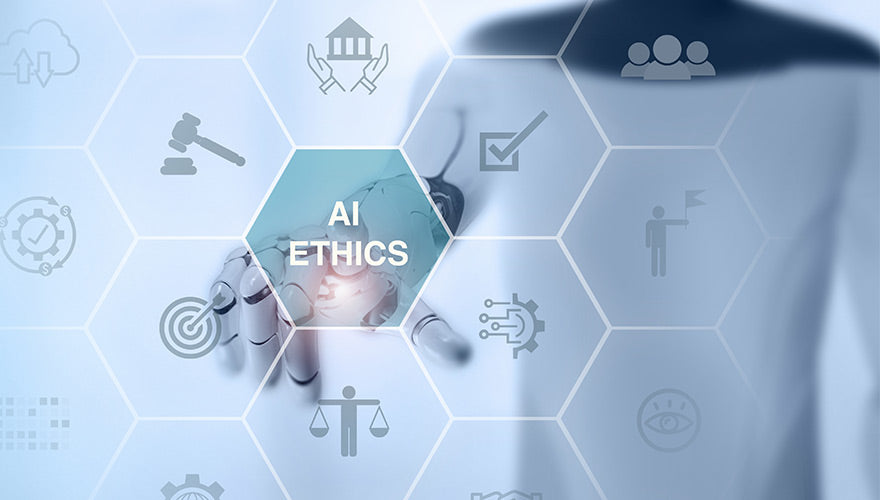Introduction to Ethics in AI
Artificial Intelligence (AI) is transforming educational landscapes by offering personalised learning experiences, enhancing administrative efficiency, and providing insightful data analytics. However, these advancements come with ethical challenges that must be addressed to ensure AI serves the educational community fairly and responsibly. Ethics in AI is crucial because it shapes how technology impacts learners, educators, and society. Understanding these ethical implications helps us build AI systems that promote equity, transparency, privacy, and fairness in education.
Fairness in AI
Ensuring Equal Opportunities and Outcomes for All Learners
Fairness in AI involves creating systems that provide equal opportunities and outcomes for every student, regardless of their background. AI has the potential to bridge educational gaps by offering personalised learning paths, but it can also perpetuate inequalities if not designed and implemented thoughtfully.
Key Considerations for Fairness:
- Inclusive Data Sets: Ensure that AI systems are trained on diverse data sets that represent all segments of the student population. This minimises the risk of biases that favour certain groups over others.
- Equitable Access: Make AI-driven educational tools accessible to all students, including those with disabilities or those from underrepresented communities.
- Outcome Monitoring: Regularly monitor the outcomes of AI applications to ensure they are equitable. If disparities are detected, corrective action is taken to address them.
Transparency and Accountability
The Importance of Clear, Understandable AI Processes and Decision-Making
Transparency in AI involves making the workings of AI systems understandable to all stakeholders, including students, parents, and educators. Accountability ensures that there are mechanisms in place to hold AI developers and users responsible for the outcomes of AI decisions.
Key Strategies for Transparency and Accountability:
- Explainability: Develop AI systems whose decision-making processes can be easily understood by non-experts. This helps stakeholders trust and effectively use AI tools.
- Documentation: Maintain comprehensive documentation of AI algorithms, data sources, and decision-making criteria. This facilitates audits and accountability.
- Stakeholder Engagement: Involve students, educators, and parents in the design and implementation of AI systems to ensure their needs and concerns are addressed.
Privacy Concerns
Challenges and Best Practices in Data Protection and Student Privacy
The use of AI in education often involves the collection and analysis of large amounts of student data, raising significant privacy concerns. Protecting this data is crucial to maintaining trust and complying with legal standards.
Best Practices for Data Protection:
- Data Minimisation: Collect only the data necessary for the AI system to function effectively. Avoid unnecessary data accumulation that could pose privacy risks.
- Informed Consent: Ensure that students and their guardians are fully informed about what data is being collected, how it will be used, and obtain their explicit consent.
- Anonymisation: Where possible, anonymize data to protect student identities and reduce privacy risks.
Bias Detection and Mitigation
Techniques to Identify and Address Biases in AI-Driven Educational Tools
Bias in AI systems can lead to unfair treatment of students and perpetuate existing inequalities. Detecting and mitigating these biases is essential to ensure that AI applications in education are fair and just.
Techniques for Bias Detection and Mitigation:
- Bias Audits: Conduct regular audits of AI systems to identify potential biases in the data and algorithms.
- Diverse Development Teams: Involve diverse teams in the development of AI systems to bring multiple perspectives and reduce the risk of biased outcomes.
- Bias Mitigation Algorithms: Implement algorithms designed to detect and correct biases within AI systems.
Ethical Dilemma Scenarios
Applying Ethical Considerations in Real-World Scenarios
Engaging with real-world scenarios helps educators, developers, and policymakers navigate the ethical challenges of AI in education. Here are a few scenarios to consider:
Scenario 1: Algorithmic Bias in Admissions
An AI system is used to screen student applications for a prestigious scholarship program. After implementation, it was discovered that the system disproportionately rejects applications from students of a certain ethnicity.
Discussion Points:
- How can biases be detected in the initial stages of developing AI algorithms?
- What steps should be taken to correct the identified bias?
- How should the organisation address the impact on affected students?
Scenario 2: Data Privacy in Online Learning
A school adopts an AI-driven platform for online learning, which collects extensive data on student interactions, including their browsing habits and personal preferences.
Discussion Points:
- What measures should be implemented to protect student privacy?
- How can the school ensure that data collection practices comply with privacy laws?
- What policies should be in place to inform students and parents about data usage?
Scenario 3: Transparency in Performance Assessment
An AI system is used to grade student essays. Students and parents raise concerns about the transparency and fairness of the grading process.
Discussion Points:
- How can the school make the AI grading process more transparent?
- What mechanisms can be put in place to review and contest AI-generated grades?
- How can educators be involved in the AI grading process to ensure fairness?
Integrating AI into educational environments offers immense potential for enhancing learning experiences and administrative efficiency. However, it also brings significant ethical challenges that must be addressed to ensure AI systems are fair, transparent, accountable, and protective of student privacy. By understanding and implementing strategies to mitigate biases, ensure fairness, maintain transparency, protect privacy, and navigate ethical dilemmas, educators and policymakers can harness the power of AI in education while upholding the highest ethical standards.
Through continuous dialogue, stakeholder engagement, and a commitment to ethical principles, we can build AI systems that not only enhance education but also promote equity, trust, and respect for all learners.


































